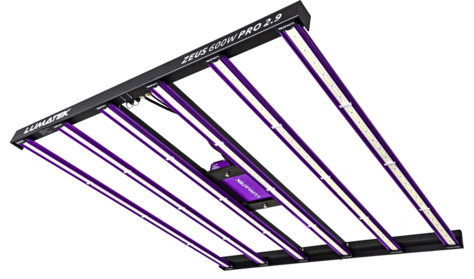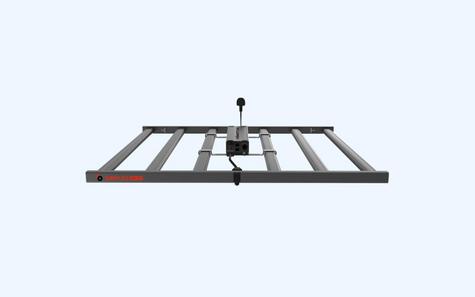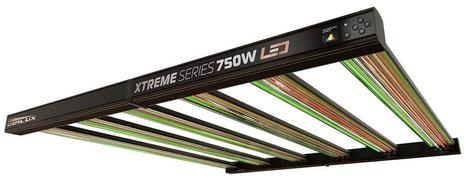
LED Grow Lights are a revolutionary innovation in horticulture, providing an efficient alternative to traditional grow lamps. These lights utilise advanced LED technology, emitting specific wavelengths ideal for photosynthesis. The range of LED bulbs available allows for tailored lighting solutions, catering to various plant types and growth stages. By using LED lighting, growers can significantly reduce energy consumption while maintaining the necessary light intensity for healthy plant development. Unlike conventional grow lights, LED grow lights have a longer lifespan and generate less heat, creating a more stable environment for plants. This modern approach to indoor gardening not only enhances plant growth but also contributes to sustainable practices in agriculture.
LED Grow Lights are advanced lighting fixtures specifically designed to promote plant growth. These lights utilise light-emitting diodes (LEDs) which produce a spectrum of light that mimics natural sunlight. Unlike traditional HPS lighting, LED Grow Lights offer targeted illumination that can be tailored to the specific needs of different plants. The efficiency of these grow lamps allows for energy savings while providing optimal light sources for photosynthesis.
These lighting fixtures come in various forms, including bulbs and strips, making them versatile for different grow setups. Many LED Grow Lights also incorporate UV lights to enhance plant development. This combination of technology ensures that plants receive the ideal spectrum of light required for their growth stages. By replacing conventional grow lights with LEDs, growers can achieve healthier plants and potentially higher yields.
LED Grow Lights utilise light-emitting diodes to provide optimal light for plant growth. These lights are designed to emit specific wavelengths of light, which are essential for photosynthesis. Unlike traditional HID lamps or CFL lamps, LED Grow Lights offer a more efficient light source by producing less heat while delivering a full spectrum of light. This range of light helps plants thrive throughout their growth stages, ensuring adequate exposure to ultra-violet light and other critical wavelengths.
The effectiveness of LED lighting can be attributed to its ability to mimic natural sunlight. Full spectrum light offered by these lamps allows plants to absorb energy needed for growth efficiently. Unlike conventional light sources, such as HID lamps, which generate heat that can stress plants, LED Grow Lights maintain a suitable temperature. Brands like Sanlight have pioneered advanced LED designs that enhance light penetration while minimising energy consumption, making them a popular choice among indoor gardeners.

LED Grow Lights offer numerous advantages for cultivating plants effectively. These lamps provide a tailored spectrum of light that encourages optimal plant growth, utilising full-spectrum light to mimic natural sunlight. The ability to adjust the light spectrum allows for specific growth stages, ensuring that plants receive the right balance of par light and infrared light. Their energy-efficient design results in reduced electricity consumption, making them a cost-effective choice. With minimal light scattering, the focused delivery of light maximises photosynthesis, promoting healthier and more vigorous plant development. The longevity of LED technology further enhances its appeal, as growers can rely on consistent performance over time.
LED Grow Lights have revolutionised the way indoor plants receive illumination, opting for efficiency over traditional metal halide lamps. These advanced lighting systems consume significantly less energy while providing the necessary spectrum of light, mimicking daylight conditions essential for plant health. The incorporation of reflectors allows LED grow lights to direct their energy more effectively towards flowering plants, maximising growth without excessive energy expenditure.
The design of LED grow lighting ensures that they produce minimal heat, reducing the need for cooling systems often required for metal halide lamps. This feature not only enhances energy savings but also creates an optimal environment for growing. Full grow lights tailored for specific plant needs can be configured to support various growth phases, ensuring that plants receive the ideal conditions to thrive while significantly lowering energy costs associated with their lights.
LED Grow Lights are designed with longevity in mind, offering a lifespan that far exceeds traditional HPS grow lights and many other plant lighting options. Popular grow lights can often burn out quickly, leading to frequent replacements and increased maintenance costs. In contrast, LED lighting spectrum products can last for up to 50,000 hours, making them an economical choice for both amateur and professional growers. Grow light bulbs made with high-quality materials ensure that these lights maintain consistent performance throughout their lifespan.
Durability is another key advantage of LED grow lighting. Unlike fragile fluorescent or incandescent bulbs, LED grow lights are built to withstand the rigours of a growing environment. These lights are resistant to shocks and vibrations, meaning they can endure the demands of a busy cultivation space without diminishing in effectiveness. Choosing high-quality LED grow lights assures growers that their investment will stand the test of time, providing reliable plant lighting season after season.




LED Grow Lights come in various formats that cater to specific plant growth needs. Full spectrum LED grow lights provide a broad range of wavelengths, mimicking natural sunlight and supporting photosynthesis across all growth stages. On the other hand, LED grow light strips offer a versatile lighting solution that can be easily integrated into different setups, ideal for propagation lights in tight spaces. Choosing the right lighting system depends on understanding the specific requirements of your plants, ensuring that the lights keep them healthy and promote optimal growth. The mighty flexibility of these lights allows for adjustments based on plant needs, facilitating effective growth strategies.
Choosing the right type of LED Grow Lights is essential for successful plant cultivation. Quality LEDs are crucial for providing the optimal light spectrum that plants need for photosynthesis. Unlike traditional lighting, full spectrum options offer a wider range of wavelengths, supporting growth at various stages. Many growers benefit from side lighting alongside overhead fixtures to enhance light coverage.
These versatile LED fixtures are designed to mimic natural sunlight, which is beneficial for plants throughout their life cycle. This adaptability makes full spectrum LED Grow Lights suitable for a variety of applications, from seedling propagation to flowering stages. By utilising many LEDs, they efficiently deliver the needed intensity of light while consuming less energy than their traditional counterparts. Growers looking for reliability should consider high-quality LED alternatives to ensure the best results for their indoor gardens.
LED grow light strips offer a versatile solution for indoor gardening and plant cultivation. Designed to emit full spectrum lighting, these strips can easily replace traditional HPS grow lamps and standard HID lighting. Their slim profile allows for seamless integration into various setups. Gardeners can position them alongside mesh lights or within a light setup tailored to their plants' specific needs. With their efficient operation, LED grow lights can enhance vegetative growth while reducing energy consumption.
Selecting the right LED Grow Lights is crucial for optimal plant growth. Various factors must be considered, including the specific needs of your plants and the features of the available LED components. LED technology has advanced significantly, allowing for a range of options that outperform traditional HPS lights and other HPS/HID lights. While some growers might opt for fake lights or cheaper alternatives, investing in quality LEDs proves more beneficial in the long run. Grow light brands offer diverse models, including the efficient 6-bar grow light and propagation LEDs designed for indoor lighting. To ensure a successful growing environment, understanding the benefits and specifications of each option is essential, whether you aim for a robust setup with grow lights or a simple arrangement for smaller plants.

Selecting the best-suited grow light for your plants involves understanding the specific requirements of their growth stages. LED Grow Lights are designed to emit plant-usable light across various spectra, including green light. This ensures that plants receive the necessary wavelengths for photosynthesis. Uniform lighting is crucial, and products like Nokotech's LEDs provide consistent light distribution. By utilising cooler LEDs, you can maintain optimal growing conditions without overheating your plants.
Another important consideration is the light schedule. Different plants have varying needs, and using supplemental lights can help cater to these requirements. The right LED Grow Lights will create the ideal environment for growth, enabling plants to thrive. Assessing the intensity and duration of light exposure will impact plant development significantly. Tailoring light conditions according to plant type ensures their health and productivity are maximised.
Selecting the appropriate LED Grow Lights can often involve oversight regarding light spectrum and intensity. Growers may be tempted to choose lamps that primarily produce blue light without considering the benefits of full spectrum LEDs. While blue light is crucial for vegetative growth, other wavelengths are essential for flowering and fruiting. A balanced approach with products like Lumatek LEDs and Dimlux LEDs ensures plants receive the necessary light for all stages of growth. Ignoring the need for supplemental lights can limit plant development, resulting in suboptimal yields.
Another frequent mistake lies in underestimating the importance of master light control capabilities. Opting for standard light settings without the ability to adjust the spectrum or intensity may lead to inadequate responses from plants. For example, the Nokotech LED Lighting offers advanced features that allow users to tailor their lighting setup effectively. New light technologies are available, and it is vital to seek products that provide flexibility and adaptability. Proper research into these features can help gardeners maximise their investment in LED Grow Lights.

LED Grow Lights are revolutionising the way we cultivate plants by utilising specific illumination spectrums essential for growth. Unlike high-intensity discharge (HID) lights, which emit a broad spectrum of light colour, LED lighting can be fine-tuned to provide targeted wavelengths, such as red light and white light. This focus allows for an optimised light experience that aligns with the plants’ photosynthetic needs. A carefully selected light series can enhance plant development without the heat output typically produced by HID lights. Understanding how different source-light configurations affect plant responses is crucial, as the right balance of light can lead to healthier crops and increased yields. The adaptability of LED Grow Lights makes them an ideal choice for growers looking to maximise their lights efficiency while minimising energy costs.
The light spectrum emitted by LED Grow Lights has a profound impact on plant development. Various wavelengths comprise the overall light that plants receive, with each wavelength affecting different growth processes. Quality light, particularly in the blue and red ranges, is crucial for photosynthesis and flowering. Far-red light also plays a significant role as a component light, influencing plant stretching and development. Supplemental lights such as Dimlux LEDs can augment natural sunlight, ensuring that plants receive adequate light for optimal growth.
Understanding how light spreads within a growing area is essential for effective usage of LED Grow Lights. Efficient placement can enhance the light quality that each plant receives, allowing for uniform growth across the garden. Different plants may require specific light spectrums, necessitating adjustments in light schedules. Light tends to dissipate over distance, so careful positioning ensures that every plant benefits from the powerful capabilities of LED Grow Lights.
Photoperiodism plays a pivotal role in plant growth, as it refers to the response of plants to the length of day and night. LED Grow Lights are specifically designed to cater to the varying light requirements of plants throughout their growth cycles. With the ability to provide a full light spectrum, these innovative grow lights ensure optimal light output and light penetration, facilitating explosive plant growth in a grow room setting. Unlike traditional HPS lights, which offer a limited spectrum, LED solutions can be tailored to meet the needs of different species, ensuring consistent and vigorous development.
Different plants have unique photoperiod requirements that dictate their flowering and vegetative stages. By selecting LED Grow Lights with the appropriate light footprint, cultivators can create the perfect environment for their plants.
Optimal placement of LED Grow Lights is crucial for ensuring plants receive the correct amount of absorbable light. For smart grow setups, positioning lights above the plant canopy maximises coverage and prevents shading. Utilising cutting-edge lighting controllers can enhance light intensity and adjust light schedules according to specific plant needs.

Positioning LED Grow Lights correctly within your grow room is crucial for effective growing. Growers should consider the layout of their grow rooms and the specific needs of their high-quality plants to maximise the benefits of the light.
Maintaining a cool environment in your grow room can enhance the performance of LED Grow Lights. Heat management is vital, as excessive temperatures can stress plants and reduce yields. By strategically placing lights at appropriate distances from the canopy, growers can ensure that their indoor growing conditions remain optimal. This careful consideration of placement allows for the full potential of LED technology to be harnessed, resulting in healthier, more productive crops.
Many home growers find that adjusting light schedules is crucial for optimising plant health. LED Grow Lights deliver tailor-made light spectrums that cater to specific growth stages. For serious indoor growers, the use of supplementary light fittings, such as tube-format supplements or light bar layouts, can enhance flowering plant growth. The ability to fine-tune the light spectrum output allows growers to accelerate plant growth effectively.
Different plants have distinct light requirements that dictate their ideal schedules. For instance, flowering plants may benefit from longer light exposure during their blooming phase. A well-planned schedule for LED Grow Lights not only ensures that plants receive the right amount of par light but also supports robust development. By understanding these needs, growers can maximise the potential of their garden, leading to thriving, vibrant plants.
LED Grow Lights represent a revolution in horticulture for greenhouse growers, providing an efficient solution to optimise plant growth in various environments. Their unique ability to deliver specific light spectrums tailored to plant needs enhances both photosynthesis and overall yields. For those managing a grow space, the flexibility and precision offered by these lights can significantly impact the health and productivity of plants. Understanding the advantages of LED Grow Lights empowers growers to make informed decisions that can lead to more successful and sustainable cultivation practices.